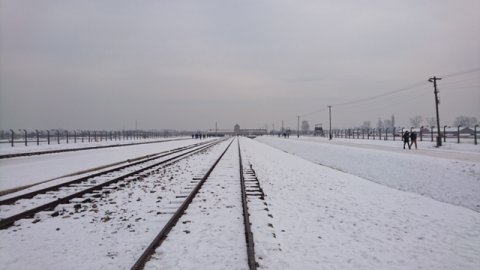Vision for a City of Hope Near Auschwitz
By Nina Meyerhof
From a quiet meadow in Cambodia to the twin fountains of Manhattan, humanity’s worst moments have left scars across our landscapes and our psyches. They appear in the shape of long concrete slabs in Kigali, Rwanda, or a crooked, skeletonized dome atop Hiroshima. Reminders of past tragedies, they remain in a constant state of slow and imperceptible healing throughout history.
The Holocaust is undoubtedly the largest and longest scar in modern Western history. You can trace it as one would trace a railroad track in a desolate field, leading, inevitably, through the brick archway of Auschwitz. Since liberation and the subsequent forming of the Auschwitz-Birkenau State Museum in 1947, the public has willingly entered such archways. Now a UN World Heritage site, an annual 2 million people from all walks of life across the world come to mourn, find names, to see and feel and know what was once the world’s darkest secret.
I first visited Auschwitz in 2015. This came at a time when I was slowing down Children of the Earth, a UN NGO that I founded and directed for over 30 years that worked and reached into 90 countries. Never did I imagine that I would have anything to do with Auschwitz.
I was invited there by a small group of women...





